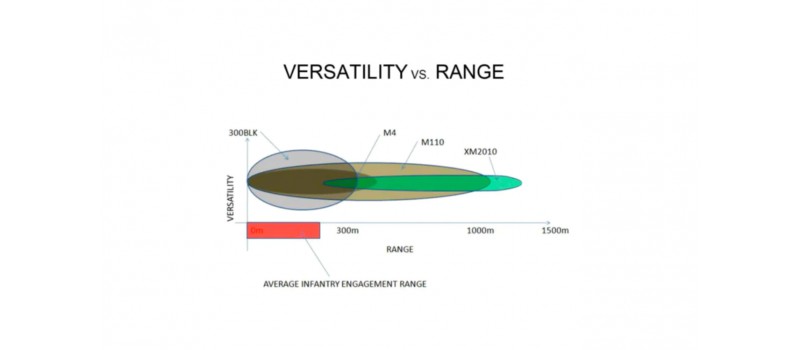When it comes to the world of AR-15 rifles, there are a multitude of options for ammunition. However, two of the most popular choices among gun enthusiasts are the 5.56 NATO and the 300 Blackout rounds. Both of these cartridges offer their own unique advantages and have gained a loyal following among shooters. In this blog post, we will dive into the ballistics and compare these two popular rounds, specifically when used with an AR-15 5.56 NATO upper. So, let's settle this ballistic battle once and for all: the difference between 5.56 NATO and 300 Blackout.
Understanding 5.56 NATO – History and Basics
Step into the time machine as we journey back to the 1960s, the era that gave birth to the 5.56x45mm NATO, affectionately known among gun lovers as the 5.56 NATO. With its distinctive high velocity, rimless, bottlenecked design, this intermediate cartridge was conceived to be the shining standard for NATO forces. Its primary mission? To effectively take the place of the 7.62x51mm NATO in service rifles.
The allure of the 5.56 NATO lies not just in its storied military history, but also in its performance characteristics. Its lightweight composition and reduced recoil make it a beloved choice for those who derive pleasure from rapid-fire shooting. Imagine the feeling of wielding this cartridge; the reduced kickback allows for steady aim and an exhilarating firing experience.
If you're an AR-15 rifle owner, the 5.56 NATO could offer an exhilarating blend of history and performance. It's not merely a piece of ammunition; it's a part of global military history and a testament to the evolution of firearm technology. Armed with this knowledge, you're now one step closer to determining the best ammunition for your shooting needs.
Examining the 300 Blackout – Origins and Fundamentals
Circa 2011, enter the 300 AAC Blackout, or the 300 BLK as it is widely known amongst firearm aficionados. This relative newcomer on the ammunition scene was the brainchild of the Advanced Armament Corporation (AAC), a U.S.-based company that saw the potential for a cartridge that could hold its own against the popular 7.62x39mm Soviet round. The catch? It needed to be compatible with the much-loved AR-15 platform.
The 300 Blackout came into existence with an important mission: to bring together the best of both worlds – the raw power of the Soviet round and the compatibility with the AR-15 system. A tall order, but one that the 300 BLK managed to fulfill with aplomb.
One of the striking features of the 300 Blackout is its impressive versatility. Designed to deliver optimum performance from both supersonic and subsonic loads, it’s a cartridge that can switch from close-quarters combat scenarios to quiet, covert operations with just a simple change of the ammunition. No need for any adjustments in the rifle’s gas system or the need for any specialized parts.
Now imagine this: You’re out on a hunting expedition or perhaps at the shooting range. The target is close, too close for comfort. Your adrenaline surges, your palms sweat, but you're not worried. Why? Because you've got a 300 Blackout. Its capability to deliver high energy on close-range targets makes it a reliable partner in high-stress situations.
The story of the 300 Blackout is one of adaptability, flexibility, and versatility. It’s a cartridge that rose to meet a challenge and exceeded expectations, becoming a worthy contender in the modern world of ammunition. So, if you're in search of a cartridge that can tackle diverse shooting scenarios with ease, the 300 Blackout is a contender worth considering.
Ballistic Performance Comparison – 5.56 NATO vs. 300 Blackout
Welcome to the arena where we pit the 5.56 NATO against the 300 Blackout in a battle of ballistic performance. Here's where we dissect the science behind each cartridge's performance, unearthing the nuances that truly set them apart.
When we talk about the 5.56 NATO, we can't ignore its stunning muzzle velocity. This cartridge zips out of the rifle with a speed that maintains itself over considerable distances, making it an excellent option for long-range shooting. Picture a round soaring through the air, maintaining its velocity, determined to hit the distant target. That's the 5.56 NATO for you.
On the other side of the spectrum, we have the 300 Blackout. While it may not boast the impressive long-distance velocity of the 5.56 NATO, it certainly holds its own in other aspects of ballistic performance. The 300 Blackout comes with a heavier bullet, which provides substantial impact at closer ranges. Envision the power, the force, the energy that the 300 Blackout delivers upon impact. Now, that's an impressive spectacle!
Without a doubt, the 5.56 NATO and the 300 Blackout each bring unique attributes to the table. Yet, they differ in their ballistic characteristics, catering to distinct shooting scenarios and preferences. The high-speed, long-range performance of the 5.56 NATO contrasts with the heavy-hitting, close-range power of the 300 Blackout. It’s a thrilling standoff, isn’t it?
Application Scenarios – Where do they Excel?
Let's delve into the theater of application, the specific scenarios where each of these cartridges takes center stage and outshines the other. If you're a hunter who often finds themselves in expansive, open terrain or a marksman engaging in long-range shooting, the 5.56 NATO might just be your ammunition of choice. Picture yourself in a vast, open field, your quarry a considerable distance away. With the 5.56 NATO, the swift flight and sustained velocity of your round could mean the difference between a successful hunt or walk back to the lodge empty-handed. Moreover, tactical situations that require long-distance, precision fire also call for the unique abilities of the 5.56 NATO.
Consider also the cost aspect. For the budget-conscious shooter, the 5.56 NATO presents a compelling argument. This round's popularity has led to a wide availability, which in turn generally means a lower price point compared to the 300 Blackout.
Conversely, should you find yourself in situations where close-quarters contact is the norm or if you value the capability to switch between loud, hard-hitting rounds and quiet, stealthy ones, the 300 Blackout becomes the top candidate. Imagine this: You're navigating through thick, dense forests or exploring the confines of an urban environment. Here, the power and adaptability of the 300 Blackout can truly shine, delivering devastating energy on close-range targets and versatility in load types.
All said, the theater of application for these two cartridges can vary widely. The 5.56 NATO and 300 Blackout each hold their ground firmly, depending on the nature of the engagement and the shooter's specific requirements. The battlefield, the hunt, the range—these are the arenas where these two contenders truly distinguish themselves. And remember, while each cartridge excels in certain areas, the most effective ammunition is the one that best meets your specific needs and shooting style.
Bottom Line – What to Choose?
As we close this tale of two cartridges, you may still wonder: Which one deserves a place in your AR-15? The decision lies in your hands. Are you one who thrills at the thought of a long-range sharpshooter, basking in the distance between you and your target? If so, the 5.56 NATO, with its impressive velocity and sustained energy, might be your perfect match.
Yet, should you find yourself traversing close-quarter scenarios or desiring a stealthier, adaptable round, the 300 Blackout rises as the top contender. Its versatility and power, especially at close ranges, make it a standout.
Remember, it's not just about the bullet; it's about you. How you shoot, where you shoot, and what you shoot for. These personal factors have the most substantial sway over your cartridge of choice. The best ammunition is the one that sings in harmony with your shooting style, your requirements, and your passion for firearms.
The 5.56 NATO and 300 Blackout stand ready, each with its unique offerings. Now, it's time to decide: Which one will you take home?










